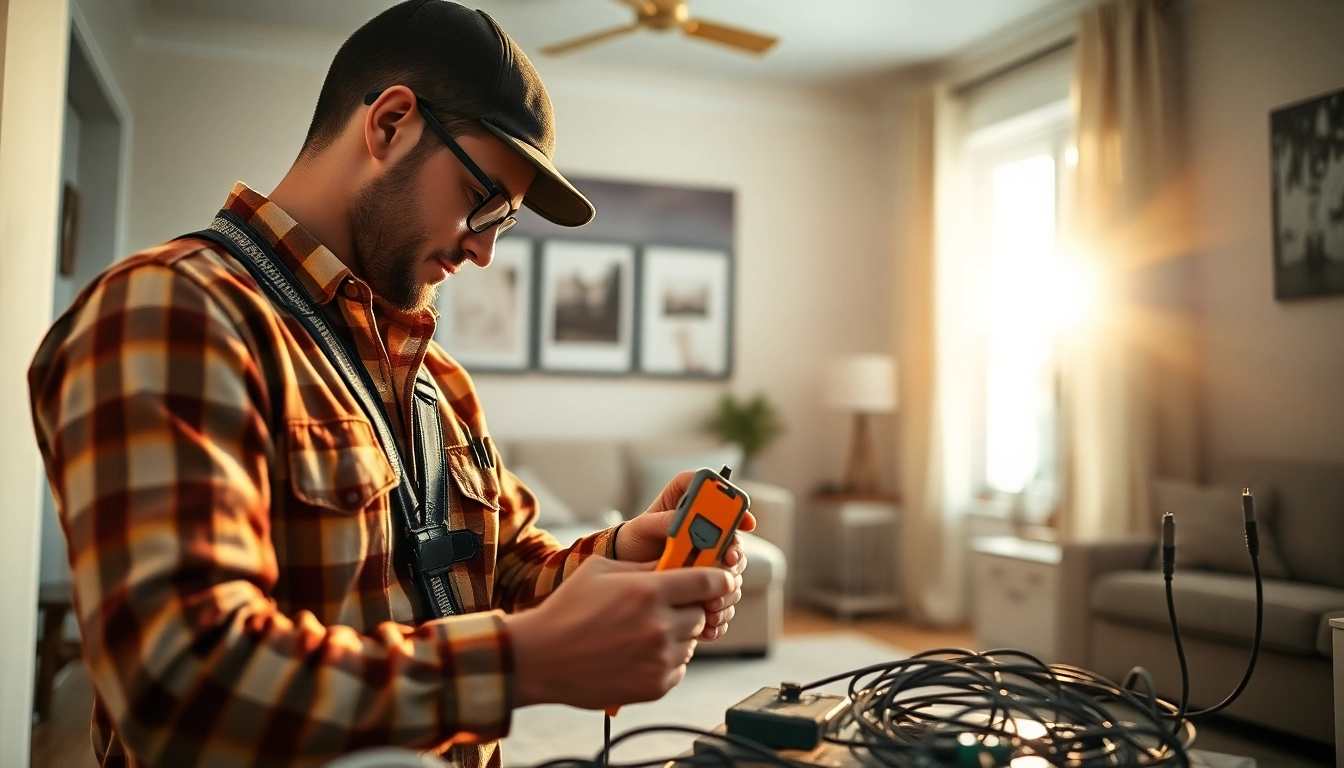
Understanding Personal Protection: Basics and Importance
In an ever-changing world, the concept of personal protection has become increasingly relevant. With rising concerns about safety, individuals are constantly seeking effective ways to ensure their security and the wellbeing of their loved ones. This entails not just awareness but also the adoption of various tools and techniques to defend against potential threats. When discussing personal protection, it is vital to grasp its significance in our daily lives. Personal protection extends beyond merely possessing weapons or tools; it includes a mindset focused on awareness and preparedness.
The Concept of Personal Protection
Personal protection refers to an array of preventive measures taken to safeguard oneself from physical harm. This can encompass various strategies, including avoidance, de-escalation techniques, and the use of self-defense tools. The core principle is to empower individuals to recognize potential threats and respond appropriately. Understanding the breadth of personal protection is essential since it involves mental, emotional, and physical preparedness.
Importance of Personal Protection in Daily Life
Personal protection plays a critical role in ensuring peace of mind. In environments ranging from urban settings to rural areas, the unpredictability of human behavior necessitates a reliable approach to safety. Engaging in practices aimed at personal protection not only enhances one’s capacity to handle adversity but also fosters a societal culture of vigilance. Moreover, the importance of such practices extends to personal development, where individuals cultivate confidence, assertiveness, and resilience in various situations.
Common Misconceptions about Personal Protection
Several misconceptions can undermine effective personal protection strategies. One prevalent myth is that personal protection is solely about physical confrontations or possessing weapons. In reality, personal protection encompasses a holistic approach, focusing on awareness, avoidance of dangerous situations, and the use of proportional responses. Another common fallacy is the belief that personal protection is unnecessary or overly paranoid. On the contrary, being proactive in personal safety allows individuals to maintain control over their circumstances. By cultivating an informed understanding of personal protection, one can break free from these misconceptions and better prepare for potential threats.
Types of Personal Protection Devices
Overview of Available Personal Protection Devices
The market is imbued with an array of personal protection devices, each catering to different needs and preferences. Common tools include:
- Pepper spray: Effective for incapacitating an assailant temporarily, making it a popular choice for personal safety.
- Stun guns: These devices deliver an electric shock, subduing a threat without causing permanent damage.
- Personal alarms: Alert others in the vicinity during a crisis, thereby attracting attention and potential help.
- Tasers: Less-lethal devices that disarm or subdue an attacker while minimizing risk to the user.
- Self-defense keychains: Items designed for easy carrying, doubling as everyday objects and effective self-defense tools.
Each of these devices has its applications, benefits, and limitations, all of which must be considered to make informed choices regarding personal safety.
Choosing the Right Personal Protection Device for You
Selecting an appropriate personal protection device is a vital step in empowering oneself for self-defense. Factors to consider include:
- Personal comfort: The device should feel manageable, appealing, and tailored to one’s lifestyle.
- Legal restrictions: Understanding local laws regarding the carrying and usage of personal protection devices is crucial to avoid legal issues.
- Effectiveness: Different devices serve unique purposes; understanding the specific scenarios in which you might need to deploy your device is essential.
- Training: Some tools require proper training to handle effectively, making it vital to invest in learning how to use them safely.
Before making a purchase, individuals should conduct thorough research, seeking expert reviews, potential training courses, and local regulations governing the use of their chosen device.
Comparing Effectiveness of Different Personal Protection Tools
Evaluating the effectiveness of personal protection tools involves understanding their capacities and limitations. For instance, while pepper spray can incapacitate an attacker, it may also be affected by wind conditions, rendering it less effective. Stun guns require close proximity to be effective, increasing risk exposure to the user. Comparatively, personal alarms are not weaponized but serve a crucial role in de-escalating situations by drawing attention to the user. By analyzing these differences alongside personal circumstances, one can determine which combination of devices ensures the best readiness for potential threats.
Personal Protection Techniques: Skills Development
Basic Techniques for Immediate Defense
Basic self-defense techniques are foundational to personal protection. These skills not only help individuals respond effectively in threatening situations but also build confidence in their ability to manage risks. Essential techniques include:
- Awareness of surroundings: Developing an acute sense of one’s environment is key to avoiding threats before they arise.
- De-escalation strategies: Learning how to diffuse potential confrontations verbally can prevent the need for physical defense altogether.
- Basic self-defense moves: Techniques such as striking sensitive areas (eyes, throat) can disable attackers temporarily, allowing escape.
Participating in self-defense classes that focus on practical skills can enhance individual capability and readiness.
Advanced Techniques for Vulnerable Situations
Advanced personal protection techniques build on foundational skills, equipping individuals to address complex scenarios. These may include:
- Situational fighting: Skills that adapt to the environment (e.g., defending oneself in a cramped space or against multiple attackers).
- Ground defense: Techniques for effectively defending oneself if taken to the ground, focusing on escapes and reversals.
- Defense against weapons: Techniques for managing confrontations involving knives or firearms, which require specialized training.
Mastering these techniques often necessitates rigorous training and practice, but they exponentially increase personal security.
Integrating Personal Protection Techniques into Daily Routines
Integrating personal protection into daily life can be seamless with the right mindset and practice. Simple strategies might include:
- Routine assessments: Evaluate personal surroundings regularly to identify potential hazards.
- Awareness exercises: Practice recognizing unusual behavior or situations that could lead to a threat.
- Safety drills: Conduct regular emergency drills to familiarize oneself with escape routes and techniques.
By embedding these practices into daily routines, individuals enhance their safety and preparedness unconsciously.
Legal Aspects of Personal Protection
Understanding Your Rights to Personal Protection
Understanding the legal coverage surrounding personal protection is crucial for anyone carrying a self-defense tool. Typically, individuals have the right to defend themselves within reasonable bounds. This entails an understanding of the concept of proportionality, which mandates that any response to a threat should reflect the threat level. Knowledge of this can prevent unnecessary legal consequences after defending oneself in a potential threat situation.
Legal Implications of Using Personal Protection Devices
Using personal protection devices is laden with legal implications. For instance, deploying tools like pepper spray or stun guns can invite scrutiny, particularly if the act is deemed excessive. Legal penalties can arise from misapplication of these devices, making it vital to engage in responsible training and use. Individuals should stay updated on their local legislation regarding the usage of these tools to mitigate risks associated with legal repercussions.
State Laws and Regulations on Personal Protection
Legislative landscapes surrounding personal protection differ significantly across states. Understanding these laws is essential for any individual considering the use of personal protection devices. Some states may have stringent rules on weapon ownership, while others may allow more flexibility. This variability emphasizes the importance of robust research into state laws regarding possession, carrying, and usage of personal protection tools to ensure compliance.
The Future of Personal Protection
Emerging Trends in Personal Protection Solutions
The realm of personal protection is continuously evolving, with innovation driving new solutions. Trends indicate an increasing integration of technology in personal safety products. Smart personal alarms, tracking devices, and connected safety apps that alert authorities or emergency contacts in real-time are making personal protection more responsive. Innovations in wearables also offer discreet and effective protection options, broadening the landscape of potential safety solutions.
Technology’s Role in Advancing Personal Protection
Technology has become a significant player in enhancing personal protection capabilities. The advent of smartphone applications designed for safety tracking and alerting can create an accessible real-time network of help. Additionally, emerging technology such as artificial intelligence for threat assessments and machine learning algorithms to predict potential dangers are redefining personal protection boundaries. These advancements not only expand the toolbox available to individuals but also optimize response times during emergencies.
Building a Community Focused on Personal Protection
Creating a community dedicated to personal protection can enhance overall safety within neighborhoods and localities. Engaging with others about safety measures, sharing knowledge on self-defense training, and forming support networks can cultivate a culture of readiness and vigilance. Community workshops, self-defense classes, and group safety assessments can nurture a collective awareness, further amplifying personal protection efforts.







